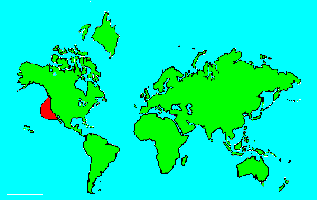SPECIES INFO
Northern pearleye is found from Alaska south to Baja California. This plain colored fish can grow to about 9 inches. The tail is forked and the mouth is large. The dorsal fin is at the center of the body. There is a nice color drawing on page 135 of Migdalksi.Pearleyes (family Scopelarchidae) are a group of fishes found at great ocean depths. There are about 20 species. Most are small fish usually less than 10 inches in length. The eyes are somewhat extended and can be focused in different directions.
The lizard and lancet fish order (Myctophiformes or sometimes called Aulopiformes if you exclude the Myctophide and Neoscopelidae families) contains several families that are generally found in marine waters. The familes include:
Alepisauridae - Lancetfish
Anotopteridae - Daggertooths
Aulopidae - Like Liazrd Fish
Bathysauridae - Deep Sea Lizardfish
Chlorophthalmidae - Greeneyes
Evenmannellidae - Sabertooth Fish
Giganturidae - Telescopefish
Harpadontidae - Bombay Ducks
Ipnopidae - Includes tripod fish and relatives
Myctophidae - Lantern Fish
Neoscopelidae - Lantern Fish Allies
Paralepididae - Barracudinas
Scopelarchidae - Pearleyes
Synodontidae - Lizardfish
Bony fish, Class Teleostomi, are a class of chordates that include the majority of fish-like animals found on earth. They are characterized by a bony jaw and a bony skeleton. They are found in both fresh and marine waters.
Backboned Animals (Phylum Chordata) are the most advanced group of animals on earth. These animals are characterized by having a spinal cord or backbone. Most members have a clearly defined brain that controls the organism through a spinal cord. Fish, amphibians, reptiles, birds, and mammals are in this phylum.
Currently, some taxonomists believe that the fish should be divided into two groups (sharks and regular fishes) and that there are some other primitive groups in the phylum such as hagfish or lampreys.
Animal Kingdom contains numerous organisms that feed on other animals or plants. Included in the animal kingdom are the lower marine invertebrates such as sponges and corals, the jointed legged animals such as insects and spiders, and the backboned animals such as fish, amphibians, reptiles, birds, and mammals.

